Alright truck gurus we need your help. Normally it is not too difficult to reverse engineer a truck to figure out why it was spec’d out the way it was from the factory but in the case of this 1998 Peterbilt 362 cab over we’re at a dead end. Obviously it was built to move some pretty heavy stuff, at least we think that is obvious. The heavy duty thought comes from the fact that a 500hp Series 60 Detroit was chosen to power the truck, there are twin steer axles under the cab, and an Eaton-Fuller 10-speed that is equipped with a shorty shifter which is kind of neat.
Being that the thing has a really small sleeper in the back of the cab, we’re guessing that it was used on some longer routes than normal around town stuff. Many parts of the truck led us to think it was used to short haul really heavy objects but then there’s the sleeper and it threw us off the scent. Looking like it has been recently painted, the truck is for sale in Florida and it has less than 210k miles on it which is not a lot for one of these trucks especially from the late 1990s. So what the heck was its job?!
Everyone’s initial reaction to the twin steer axles is that it helps the truck turn tighter and while it may give a little help in that regard, the twin axles up front are more for ride quality and stability than anything else. If you have a really heavy load on the back and the front of the truck is sprung insanely stiff it is going to ride like absolute hell. Adding the second axle and softening the spring us some makes everyone and everything happier going down the road. It also happens to look cool as hell.
There was at least one 8×8 version of the Peterbilt 362 built and it is a really neat truck but this ain’t it. The lack of aggressive rubber on this truck means that the rig was intended to live life on asphalt and not off in the hinterlands of constructions sites and building projects. All those placards on the front bumper also have us thinking that the truck could have bene hauling containers of chemicals or fuel, but that seems weird.
Here’s your chance to shine. What the heck was this thing built to do?!
Check out the photos and then hit the eBay link at the bottom of the page








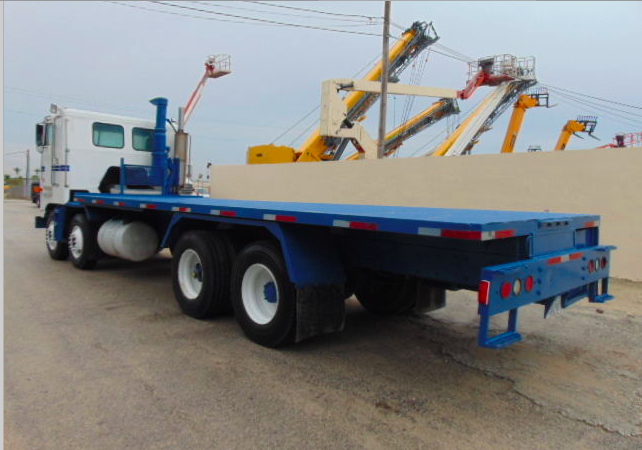
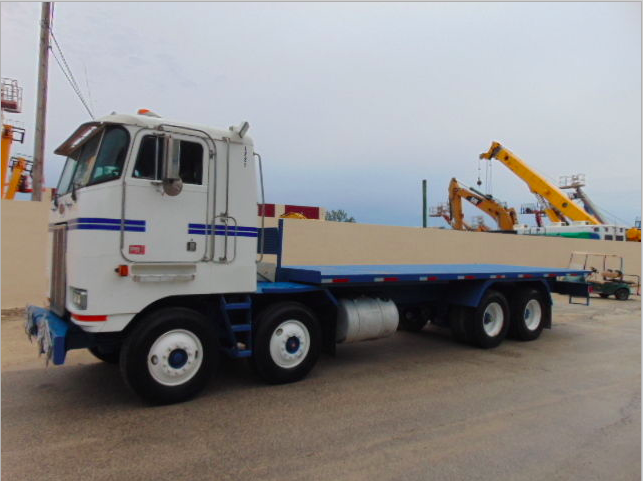
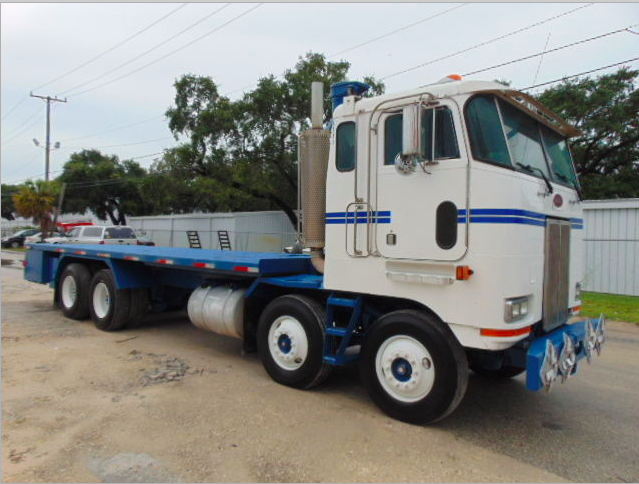

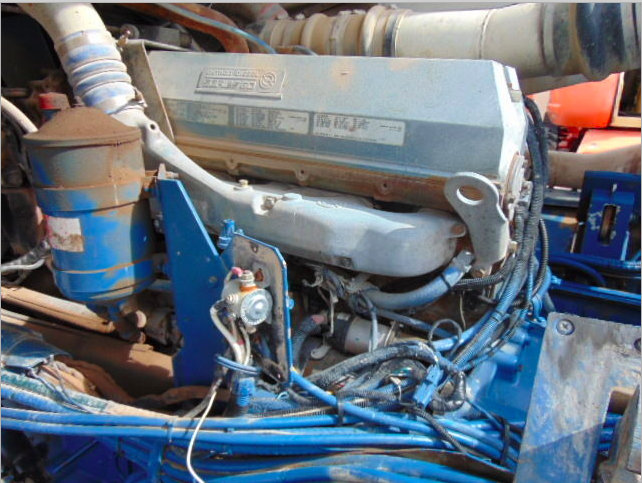
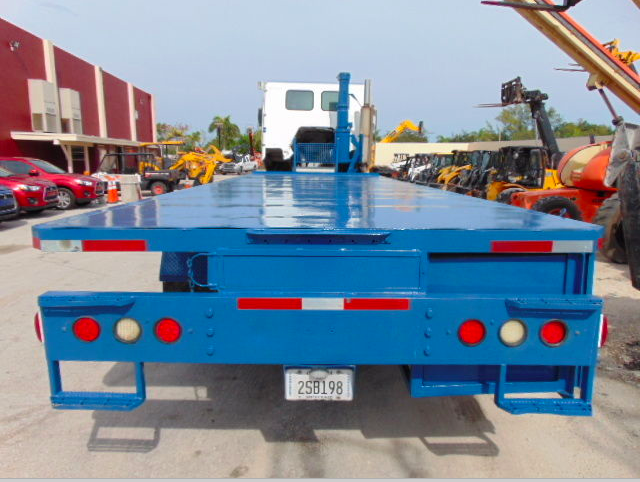





Maybe the original body was swapped for the flat bed at some time?
twin steer was probably used on mobile crane duty, or it was setup for mixer truck usage. Wisconsin used to have a lot of twin steers and goofy axle combos in the past.
Treed!
My first thought was crane truck and then I saw the pictures, and now I’m thinking Crane truck. lol.
Google dual steer boom truck. Apparently some of them were wreckers too.
In Australia a twin steer is not uncommon on a long bed truck; it’s all about carrying a load on that long bed, needs two sets of steer wheels to carry weight.
A lot of the pictures show cranes and other construction equipment in the background. My guess is that either:
1. It originally had a crane body on it. That would explain the PTO, but not the placards.
2. It was used to tote around the construction equipment.
3. It was originally built for (1), then had the flatbed swapped in to be used for (2).
This should explain it all for you the same truck in its original configuration
https://www.flickr.com/photos/granitefan713/8457422946
Good find.
As far as I can figure, two front axles in tandem should allow something around 150-170% the load of the normal single, on that end of the truck…so total load-carrying capacity is increased, but in a manner allowing more weight on the front, thus contributing to stability more than adding a third rear axle such as the liftable type used in dump trucks. I can imagine how that would be helpful for cranes, and probably other types of uses such as high c/g loads.
All just guessing.
Dual steer set up w/deck I would have to say boom or picker/self loader unit. White with that colour blue and the dual stripes my best guess would be oilfield use as that is the BJ Services livery.
I’m confused, thought they stopped making COE back in the 80’s?
So did I!
Extra steer axles help meet the on highway bridge weight laws.
This is needed when steer axle weights exceed 20,000 lbs
Possible overseas export?
Truck appears to be an old BJ Service or Baker Hughes piece of equipment.It would be used to haul heavy equipment used to frac oil wells or haul chemicals to site well sites.
A 500hp DDECIII Series 60 was the norm in 1998, they were everywhere…
Twin steer is only for weight. Generally they turn worse then single and ride worse then single.
Possibly oil / gas field use. Notice tow hook in front bumper.
More maneuverable than semi-truck combination.
With 4 steer tires you do not need floats.
By the time they would need this truck the roads are semi-improved.
Placard mounts would be for hauling chemicals in containers to
the drilling / fracing operation.
i drive a twin steering front axle like this and beleve me they have awuful turning circles there purely to carry the extra weight
That’s not a shorty shifter by the way, all cab over trucks come with a shifter like that, which operates cables and linkage to actually shift the transmission.
The engine was probably picked to standardize the fleet. Most oil companies pick the same engine for everything unless it’s going to be for something special.
Like stated, twin steers for load capacity.
About the sleeper, a while back, oilfield companies over the US to a hard line against driving while tired. They were expecting drivers to pull over and sleep, but at the time, they only purchased day cab trucks. After DOT found out about them requiring drivers to sleep in the trucks with no sleeper, they required the oilfield to buy trucks with sleepers.
I used to work for a company that used a truck configured like this for high pressure water blasting it would have a special boom attachment design for different jobs, I seen it used in cleaning u-tube style heat exchangers.